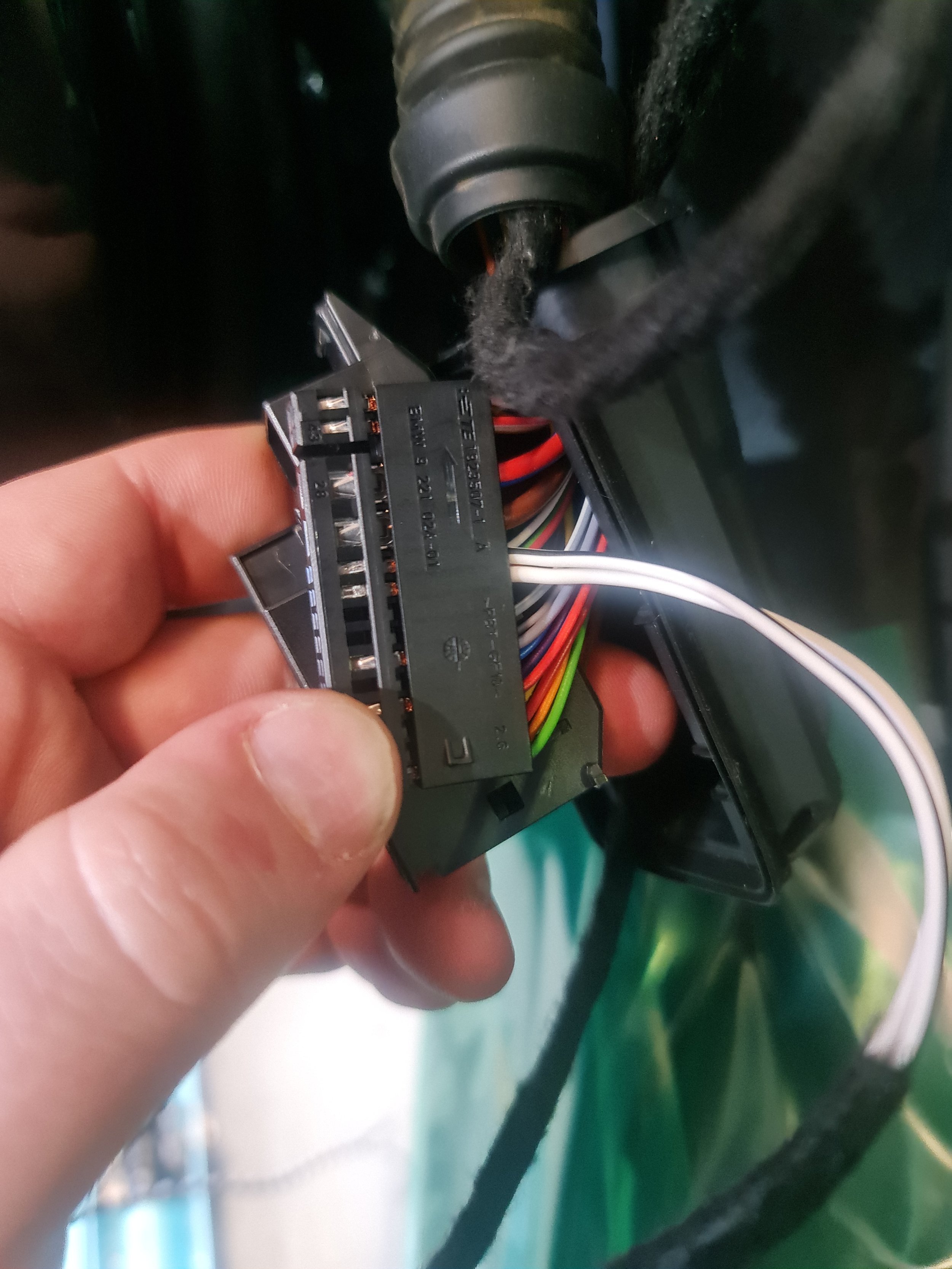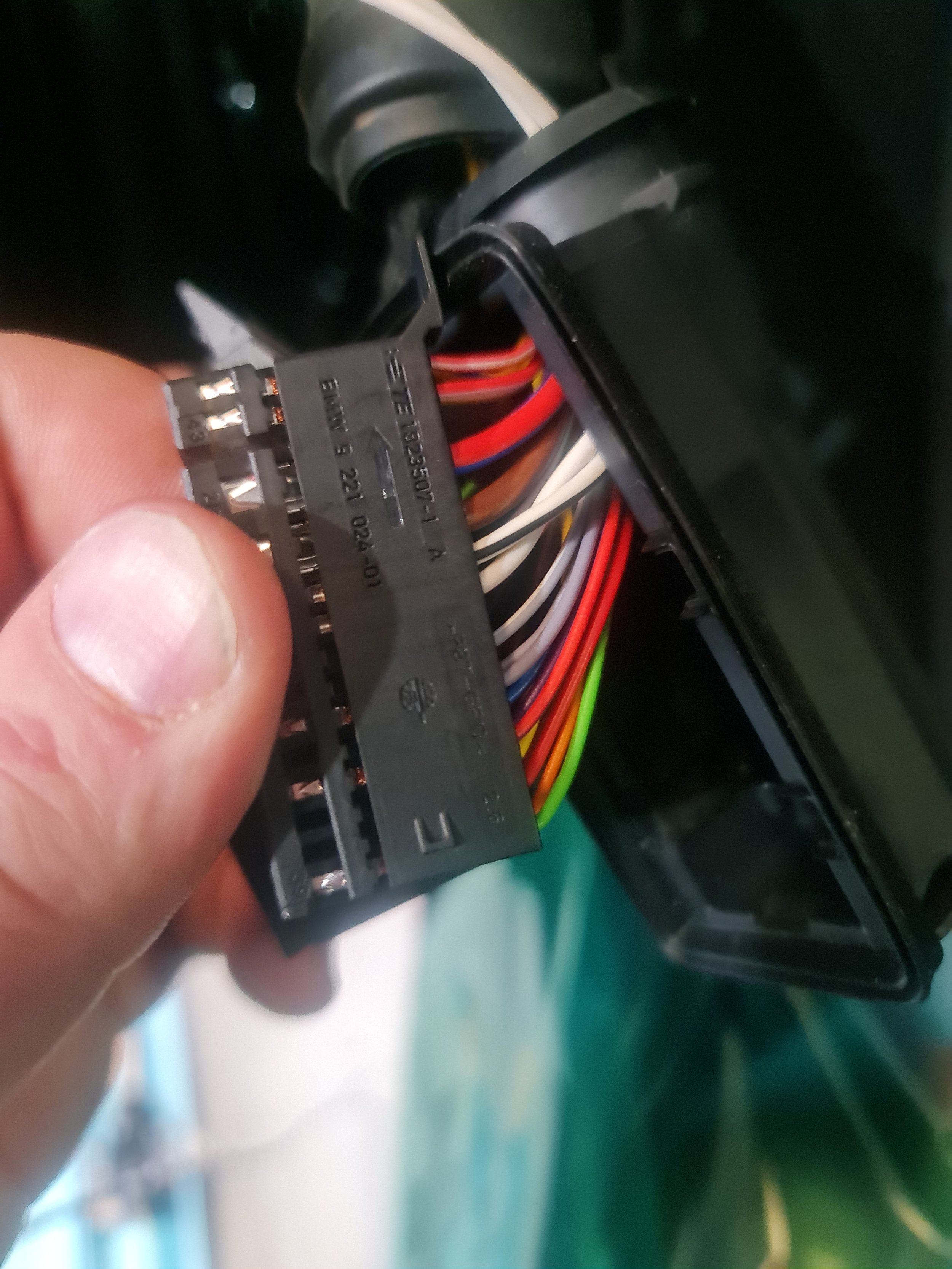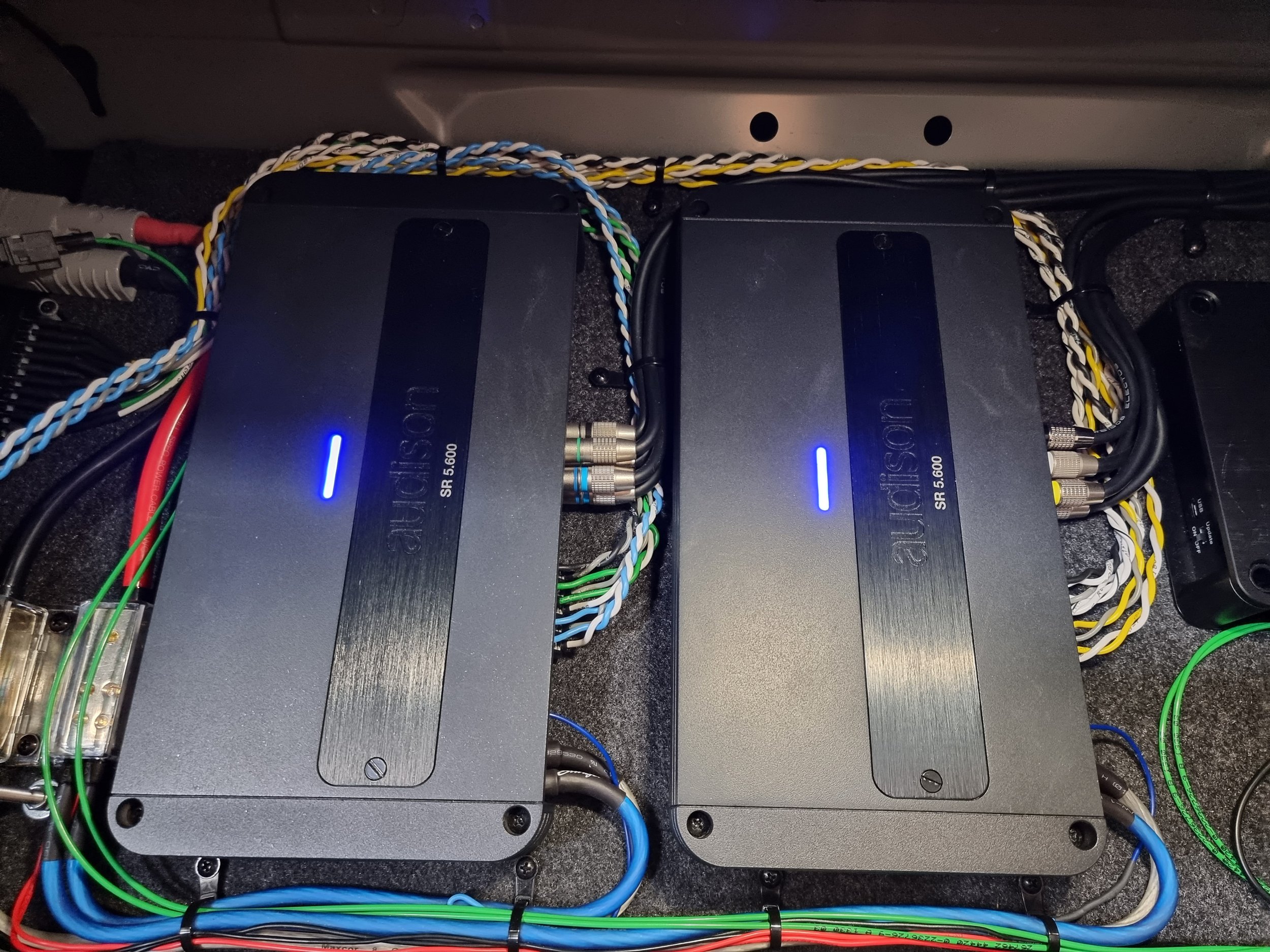More speakers does not mean better sound, and the BMW Bowers & Wilkins system is no exception. Bowers Wilkins boast “up to” 1200 watts of power across 16 speaker channels. While this is certainly a cut above the baseline or even Harman Kardon options that BMW offer, this client shares our opinion that the B&W system is muddy in the midrange, and lacking definition in both highs and lows.
The first step for us was to find speakers that would fit nicely into the vehicle. The B&W system has 14 speakers that required replacement (the centre speaker was not replaced but was disconnected). Audison manufacture drop-in speaker replacements for some BMW vehicles, but nothing that was compatible with the 5 series so some custom modifications were required in certain places to get the best fit.
We swapped out the underseat woofers for 8” subwoofers with a 2ohm impedance first off. We then replaced the mid range speakers with a 4” driver that is optimised for mid-low range, rolling off down at 200-150hz. The tweeters were replaced with a Tetolon (fabric) dome tweeter that handles mid-high frequencies incredibly well without sounding harsh.
Overall the speaker replacements created a much warmer and accurate sound without needing to compromise on the look of the car. We removed the crossovers in the front doors (more on that later) and installed our own crossovers for the rear doors and rear shelf. This gave us a total of 10 channels in the vehicle.
The original rear shelf speakers
Our replacement speakers
Next we needed to work out our amplification. The B&W amplifier wasnt going to cut it, we wanted more power going into every speaker to allow us plenty of room for tuning, as well as lots of volume when required. We settled on again, an Audison configuration of two 5 Channel amplifiers. Amplifier 1 would run the front tweeters, front midrange, and drivers underseat sub. Amplifier 2 would run the rear doors, rear shelf and passenger side sub. This gave us 75 watts per channel for the tweeters and mids, and a whopping 500 watts per subwoofer. While this might not sound like a lot for a bass-heavy system, it was perfect for the accurate yet punchy sound we were looking to achieve.
Our inputs were handled twofold. First we took the MOST fibre optic signal into a mObridge DA1 converter, which gave us a lossless TOSLINK output. We fed that TOSLINK signal into our DSP, the incredibly powerful Audison bitOne HD Virtuoso, which gave us the full 10 fully customizable channels out into our amplifiers. This allowed us to run those front tweeters without a crossover and control their frequency range via the DSP.
The original B&W Amplifier
The two new amplifiers and DSP. Who said size isn’t everything?
The thin strip of carpet at the top of the boot is our panel
Our biggest challenge then became how to fit all this hardware into the car. We landed on creating a false roof in the boot, the bottom of which would sit level with the lowest point of the parcel shelf. That way there is very little boot storage space lost, but we have a large area to mount all of our equipment.
The board folded down is a demonstration in wiring managment and component placement.
The board was made out of a high density MDF and then covered in a near exact match carpet to the rest of the BMW interior. We installed two screw-in handles close to the boot opening, and hinges on the back to allow the entire board to fold down for maintenance (or if the client just wanted to show it off) All pieces were manually hand finished to create a curve to soften the bottom and side edges, as well as cutouts for the rear seat release handles.
A crucial part of the brief from the client was that the vehicle needed to be able to be restored back to OEM if required. That meant we had to do as little modification to the factory wiring as possible. We sourced an opposite connector to the OEM amplifier wiring that allowed us to plug directly into the factory speaker cables and removed the need to run any excess wire through the car. The new tweeter wiring at the fronts was routed through the door harness using original pins and sockets that perfectly fit the door plug. Power for the amplifier board was handled using a 150 Amp Anderson plug, that is wired directly to the battery, and the MOST input connection was extended and the excess looped in a circle to prevent kinks or damage to the line.
The OEM door harness with our new tweeter wires added
Top to bottom: 150 Amp Anderson plug, femal MOST connection for the extension line, OEM amplifier connection plugged into brand new opposite socket, 4 pin locking connection for tweeters.
Lastly, once all of this went back together, was to tune the car. We measured the distance from each speaker (except the subwoofers) and punched that into our DSP software to create a starting point for the time correction. We then adjusted the speakers individually to create the perfect soundstage, including adjusting the subwoofers so that they sound fuller in the staging. We then gave each speaker a custom frequency curve to both bring out the best in each driver and to remove some resonance at certain frequencies.
Altogether it was a remarkable experience to create a system that didn’t require compromise in some way. Below is a gallery of all photos taken throughout the process, for those that are interested. For more information or a quote please reach out here or on 90787101



























